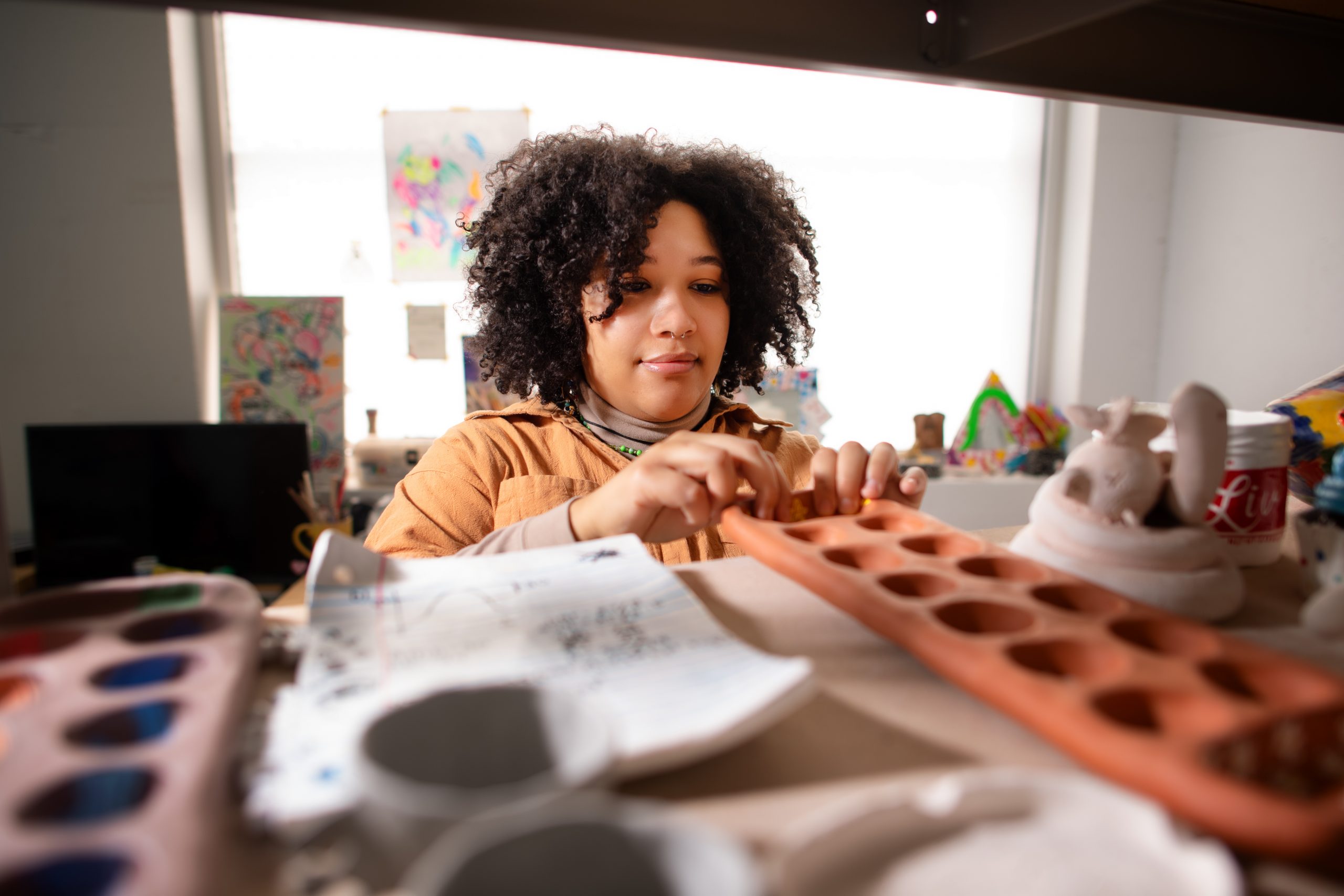38 How to teach with art and why

Using art as a teaching tool in non-art courses has a great capacity to foster metacognition through play and imagination. Art practice constructs new knowledge, and it teaches vital problem-solving skills and processes. If you encourage your students to find creative ways of expressing themselves and solving problems, they will develop higher decision-making skills (Corbisiero-Drakos et al., 2021). Combining analytical with creative thinking will allow your students to become innovators.
Art in the STEM or social sciences classroom can improve visual learning and observation skills. It also enhances students’ learning experience by making it more engaging and by adding play and fun to sometimes daunting academic projects. Using art in your classroom may add balance to your lessons and act as a de-stressor for students.
Arts integration is a technique which some STEM, social sciences and humanities instructors use to differentiate instruction and allow students to demonstrate their knowledge and learning in diverse ways. It enhances instruction through varied and flexible avenues since arts integration provides learners with a span of languages, cultures, symbol systems, and responds to various preferences (aural, visual, kinesthetic). These in turn open alternative ways to encode and access information. (Patton & Knochel, 2017) Successful arts integration creates evolving problems which students solve through creativity, experimentation, as well as the tools and knowledge from their subject area. Arts integration provides active learning opportunities and encourages collaboration. (Timotheou, Ioannou, 2021)
Some ideas for activities:
- Students could be asked to create a detailed 3D model of a virus or plant cell.
- Digital photography and editing could be used to gather evidence on environmental issues.
- Poetry and drawing could be utilized to express research results in a lab class.
💡 Please reflect:
Think about incorporating some creative activities into your curriculum and lessons. Find artwork that expresses a concept or problem similar to what you are teaching in your course. This could be a drawing, a community sculpture, or an exquisite corpse exercise (a method by which random words or images are collectively assembled). Ask thought-provoking questions, for example:
- What is missing in an abstract painting? And why?
- What would this work look like in a different medium, such as film, performance, or song?
Discuss it in class. Make sure to draw on the parallels to your lesson content.

Feedback/Errata